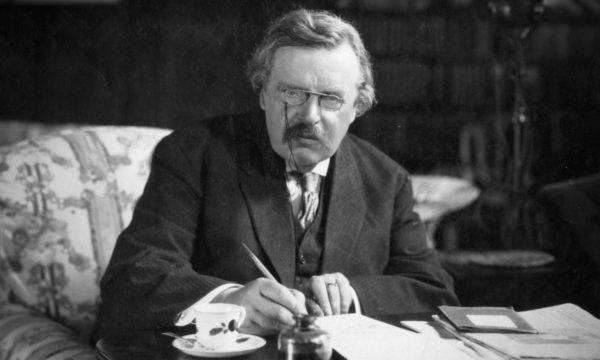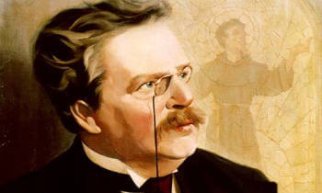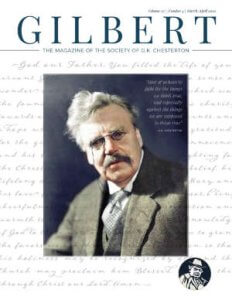Art is about being articulate. Chesterton, we should be reminded, studied to be an artist, not a writer. He didn’t go to college; he went to art school. Chesterton wrote visually. He wrote with an artist’s eye. And an artist’s understanding. Which is perhaps why he was such a great writer. His words became flesh. His first published articles were on art criticism, and one of his earliest books, published in 1904, was a verbal portrait of an artist, G.F.Watts.
George Frederick Watts lived from 1817 to 1904. An accomplished painter and sculptor, by 1880, he was probably the most revered figure in British art. He was best friends with Alfred, Lord Tennyson, and painted several portraits of him and of other famous figures of the time: Robert Browning, Thomas Carlyle, William Morris, Matthew Arnold, Cardinal Manning, John Stuart Mill. He also painted an intriguing and mysterious series of allegories, which were enormously popular in their day, but now, according to one modern critic, “seem vague and ponderous.” But this is less a comment on Watts than on the state of contemporary art criticism. The allegorical paintings may seem vague and ponderous to the modern art critic because he hasn’t read Chesterton’s book on Watts.
Chesterton’s analysis of Watts’ allegorical paintings is not only brilliantly incisive, but his writing is at its most beautiful. And the book itself is filled with elegant sepias of Watts’ paintings.
One of Watts’ most famous paintings is called Hope, but at first viewing we might be inclined to call it Despair. A dim canvas showing a bowed and stricken and secretive figure cowering in the twilight over a broken lyre with only one remaining, twisted string. But as Chesterton explains, it is “a string which is always stretched to snapping and yet never snaps. . . the queerest and most delicate thing in us, the most fragile, the most fantastic, is in truth the backbone and indestructible. . . Faith is always at a disadvantage; it is a perpetually defeated thing which survives all its conquerors.”
There is a similar twist in Watts’ allegory of “commerce” which shows a throned figure clad in heavy scarlet and gold, but whose face is that of a blind beast. As this imperial thing, with closed eyes and fat, sightless face, sits upon his magnificent seat, he lets his heavy hand and feet fall, as if by a mere pulverizing accident, on the naked and godlike figures of the young, on men and women. This all-destroying god and king is adorned with the ears of an ass, declaring that although he is royal, imperial, irresistible, and when all is said, he is imbecile.
But Watts has not given this figure the name “Commerce,” rather he gives it the name of the thing which our society calls Commerce and praises as Commerce, and regards as something good and opportune and fulfilling and at our service, but is in fact, just the opposite: evil, inescapable, insatiable, and oppressive. It is the name of the other god. Mammon.
Modern commerce, says Chesterton, is about savagery of the rich, the hunger of the satisfied, and the sudden madness of the mills of the world. You cannot serve God and Mammon because — obviously — loving Mammon keeps you from loving God, thus breaking the first Great Commandment of Christ, but you neither can you love your neighbor if you are a slave of that blind and bogus god of money and materialism. Your neighbor becomes your competitor in that system, and your enemy. Here — in a book of art criticism — Chesterton reveals his early understanding of social and economic justice, a concern which would take up so much of his energy later in life.
Yet the book is most profoundly a statement about art and the limits of language, including allegorical language. And Chesterton prophetically declares, “The new school of art and thought does indeed wear an air of audacity, and breaks out everywhere into blasphemies, as if it required any courage to say a blasphemy. There is only one thing that. . . requires real courage to say, and that is a truism.”





